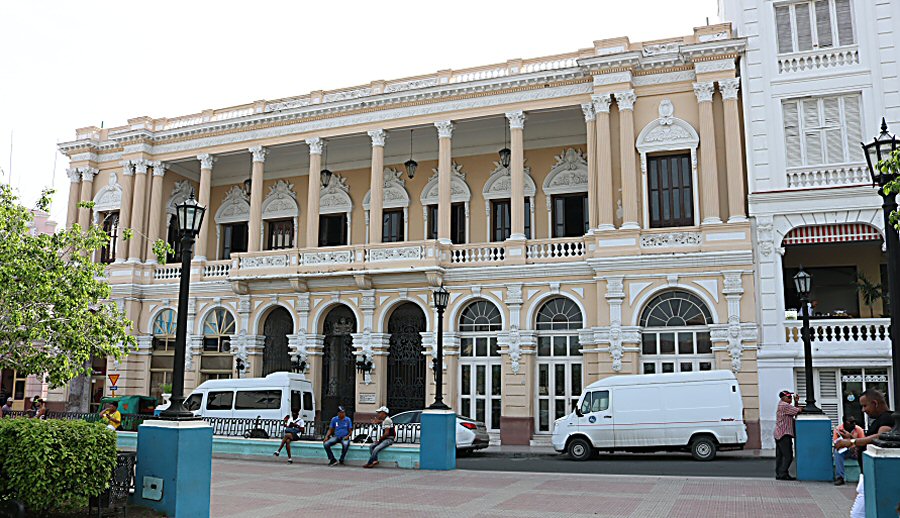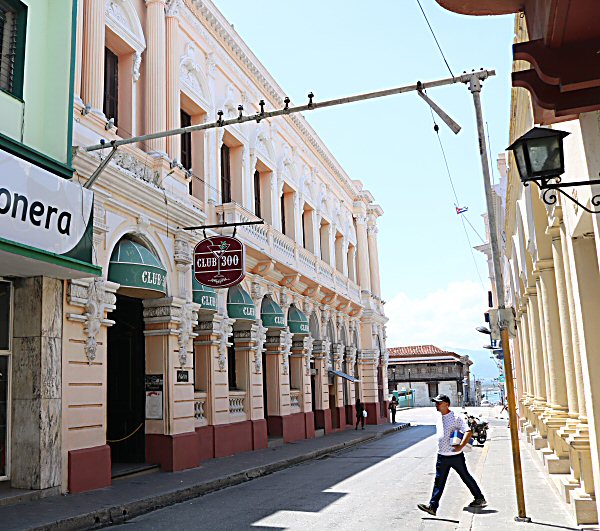Club San Carlos is located next to the Hotel Casa Granda, on the General Lacret Street between Heredia and Aguilera streets.


Club San Carlos was the cultural center of the santiaguero
bourgeoise before the revolution.
Club San Carlos was inaugurated with the name of Academy San
Carlos de Vargas at the top of the street Santo Tomas # 1. The
majority of its founders were Cuban and French people. It was
established as fencing hall that continued its function
uninterrupted until the cessation of Spanish rule in Cuba. After
moving several times from the premises, it settled permanently
to the former residence of Don Bartolomé Portuondo y Rizo,
Marquis of Tempú, that is its current localization.
In 1864, it took the name of Club San Carlos by extending its
cultural activities and modifying its statutes with eight
articles. According to the story, article seven said: "whoever
wishes to belong to the club, must be presented by two
members". Likewise, the eighth warned that admission would be by
secret ballot, and if it was accepted, an "admission letter and
a copy of the regulation" would be sent. If no answer was
received, the non-admission would have to be considered, and
this unappealable decision could be never questioned.
It became popular in the commercial life and in intellectual
society of the city due to its rich activities, such as
receptions, dance etiquette, disguised dancing, political
meetings, tribute acts, commemorative activities and banquets.
In 1899, it was the first building in the city that raised the
Cuban flag.
At the end of the 19th century the owners of the club decided to
build a more luxurious building, so that the old construction
was demolished in 1906. New building was completed in 1913. It
was designed and built by the architect Carlos Segrera. It had
three floors topped by two beautiful domes that were covered
with colored ceramic elements. There were wide corridors on the
second and the third floors that were protecting the rooms of
the west-facing building from the sun. Some of the classical
architectural elements of this building were the semicircular
arches, the horizontal incisions on the façades, the stone
balusters, the Corinthian columns, richly ornamented
entablatures and the garland motives. The second floor is an
ideal place to enjoy one of the best panoramas of the city.
In 1932, a terrible earthquake destroyed its third and also top
floor completely, so that it was finally demolished, leaving the
approximate image that we see today.
In the course of time this property undertook several functions.
In 1953, a gallery was opened with the name of Oriente Art
Gallery on the second floor to exhibit the works of art of
Portocarrero, Duque de Estrada and Pedro Arranz. Since 1980s the
Municipal Culture House and the Estaban Salas Concert Hall are
seated on the second floor. A snack bar, Club 300 and a bank are
serving on the first floor.
